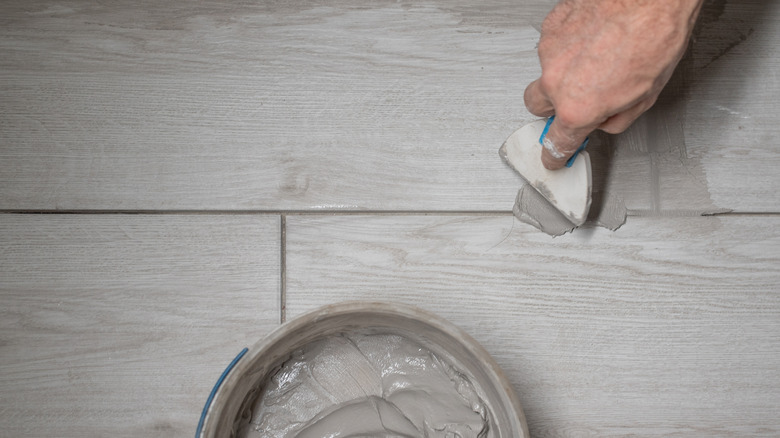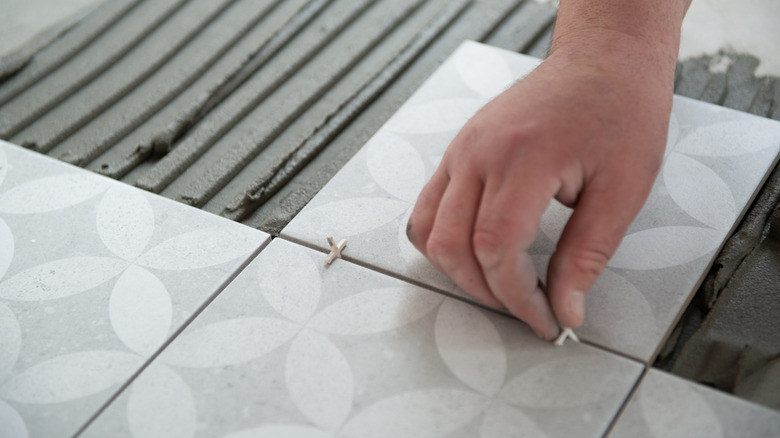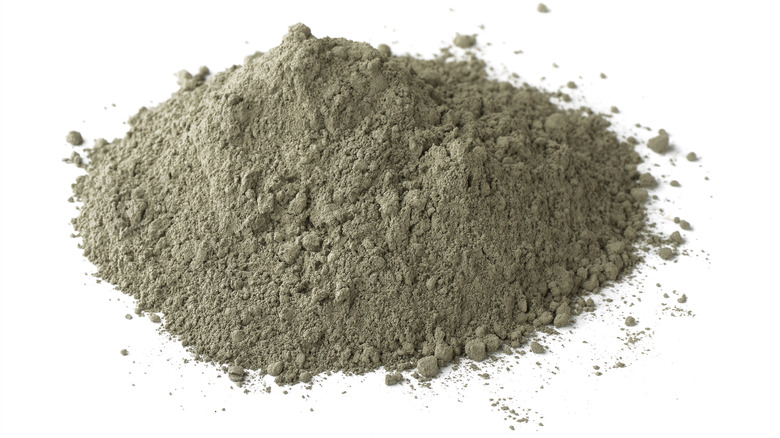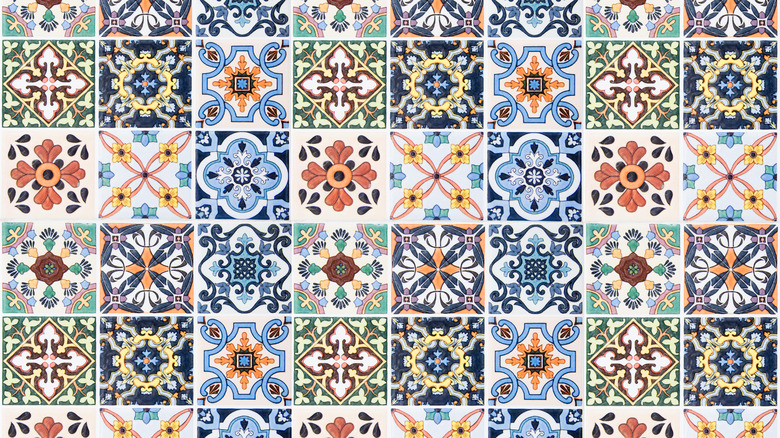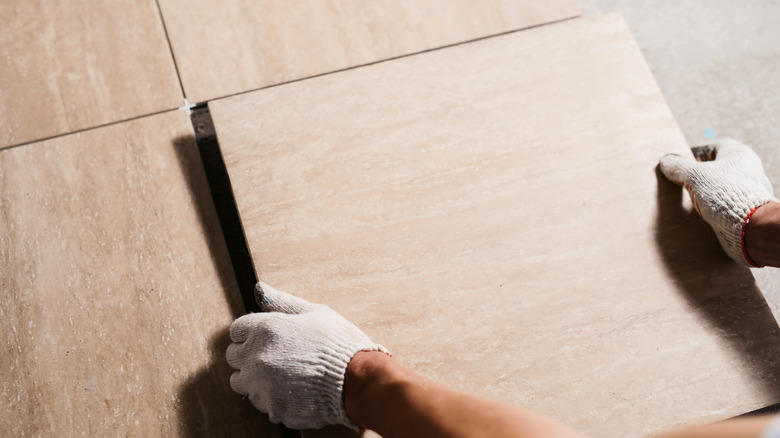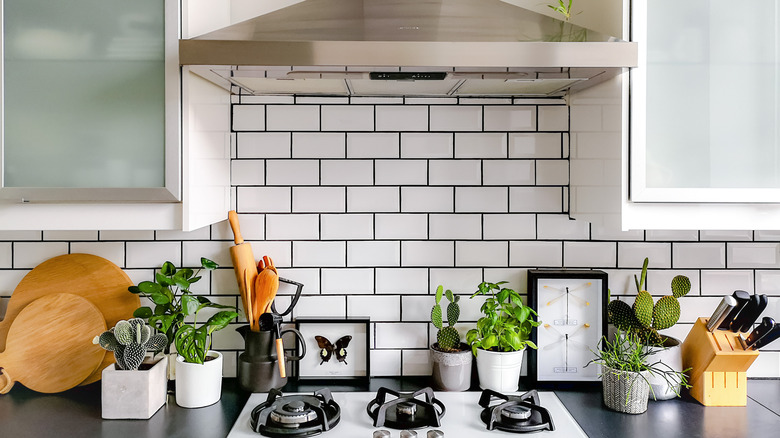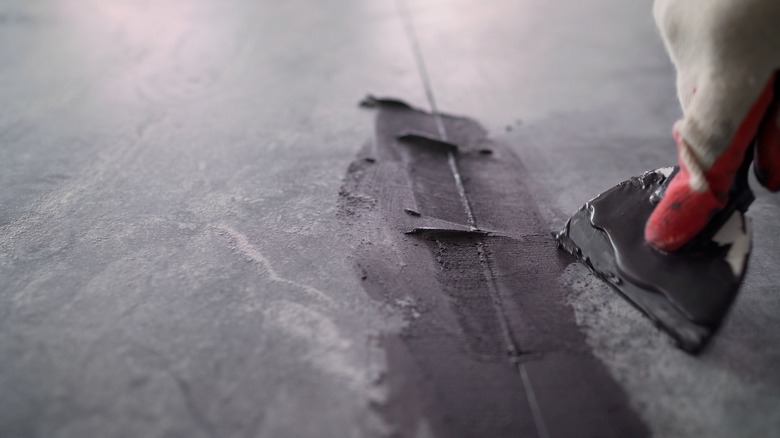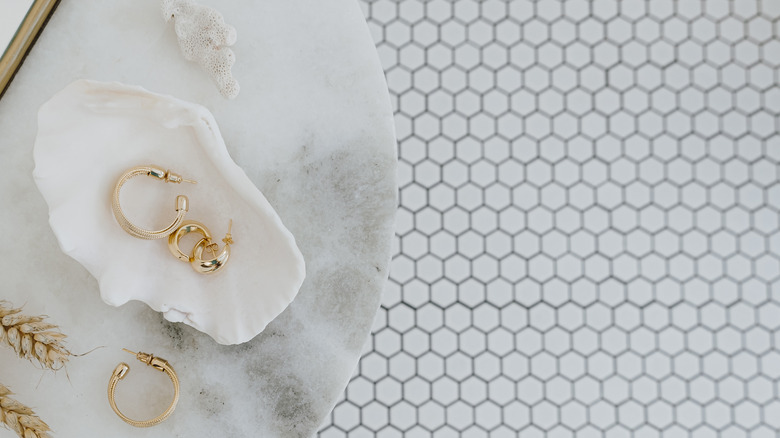Sanded Vs. Unsanded Grout: A Comparison
Standing in a tile aisle at Menard's or Home Depot, a novice DIYer (perhaps following the guidance of a YouTube expert or brief experience helping a friend) probably has a number of things to be confused by. Grout is probably near the top of this list of bafflements. We have a vague idea of what it is: that stuff between tiles that, once it's dirty, neither man nor machine may restore to its natural color. Grout presents itself as troublesome from the outset by spilling itself all over the aisle, your shopping cart, your shoes, and your children. Perhaps this is in response to your complaints that it's as heavy as a bag of cement... not least because it is a bag of cement. And just when you think you've got it under control, you notice that some grout is sanded and other grout is not.
Getting a handle on the differences between sanded and unsanded grout might seem challenging, because the one simple difference between them has a lot of different implications. The only real difference between the two is exactly what you might expect: one is mixed with sand, and the other isn't. Simple enough. But that simple distinction will drive a lot of your decisions while back at home peering at the instructions on the bag.
Here we'll be talking about basic unsanded and sanded tile grout, but there are a lot of other options on the market. Tile Outlets of America, for example, mentions TEC Power Grout and epoxy-based grout, and there are others. These can be difficult to work with and none have yet replaced basic cement-and-sand grout as the go-to for tile work. But when it seems like neither traditional sanded nor unsanded grout is suitable for a task, we'll mention the alternatives.
How does the composition differ?
Tile grout, in its simplest unsanded form, consists of portland cement and water-dispersed pigment. This pigment may be made up of oxides, epoxy, acrylic, and other colorants. Sometimes the qualities of the cement are enhanced or modified using plasticizers, polymers, and/or latex. Though it is also cement-based, polymer grout is considered by some a different type of grout altogether because its characteristics often change the abilities and limitations of basic unsanded grout.
For example, some polymer grouts can be used to fill larger spaces than basic unsanded grout, according to Archtoolbox. Other grouts with added polymers, like Mapei's Keracolor U, have all the traditional caveats and restrictions, so it's important to read and understand the package so you know what to expect.
Sanded grout is simply unsanded grout with sand added, though it might be added in different amounts. Some grouts are more heavily sanded in order to make them suitable for filling larger gaps. You'll often see the sand referred to as "graded aggregate," which simply means the grains of sand are a uniform size. If you're making your own sanded grout, these roughly correspond to the types of sand available in the masonry section of your hardware store, such as coarse plaster sand (via Home Depot) or finer jointing and polymeric sand (via Western Interlock).
How does the appearance differ?
While any difference in appearance might not be readily evident, if you look for it you'll see (and certainly feel) differences in texture. Unsanded grout is predictably smoother than the sanded variety. You mix it to the consistency of peanut butter, according to Home Depot, and when dry it keeps most of that smoothness. Sanded grout, on the other hand, obviously has a slightly rougher, sandy texture. This difference varies based on the amount of sand in the sanded variety. Finer sand produces a smoother grout, which also tends to be stronger assuming enough water is used in the mixing process (via Construction and Building Materials).
Pigments used to color grout also affect its appearance, obviously, and sometimes this is a function of the amount of sand used and how much the grout is worked. Texture itself affects the color, with rougher surfaces tending to look darker and more finely sanded or unsanded grout tending to look lighter (via Custom Building Products).
What are the differences in cost?
Because it's mostly made up of sand, and because sand is cheaper than cement, sanded grout tends to be quite a bit cheaper than unsanded. At both Lowe's and Home Depot you can get around 250% as much sanded grout for only about 18% more money. For example, at Home Depot 10 lbs. of unsanded arctic white Polyblend Plus grout is $18.47, while 25 lbs. of sanded bright white Polyblend Plus is $15.67.
Using Mapei's tile grout calculator and some made up dimensions (100 sq ft, 10x10 ¼-inch tile, ⅛-inch gap width) you find you need 5.24 lbs. of sanded Keracolor S, but 3.77 lbs. of unsanded Keracolor U. Using Lowe's per-pound prices of $.64 for Keracolor S and $1.35 for Keracolor U, that hypothetical room would cost $3.35 in sanded grout and $5.09 in unsanded grout, about 52 percent more. Of course, there are tons of factors that affect real-life calculations. Tile that uses sanded versus unsanded grout are unlikely to be the same sizes, for example. But in terms of pure cost per pound, sanded grout tends to come out on top.
Durability and Maintenance
Sanded and unsanded grouts behave differently in a few ways. One of the most obvious is that unsanded grout tends to shrink more as it cures than the sanded variety does. This produces an effect usually called simply "cracking," though keep in mind there is more than one cause of grout cracking. According to Ceramic Tile and Stone Consultants, cracking can be caused by using unsanded grout in a gap that is too large (or vice versa), by too much movement in the floor or subfloor, by mixing the grout with too much water, by using too much water to clean unsealed grout, and other causes.
When unsanded grout is applied to gaps larger than the grout is specified for, cracks can result from the shrinkage of the grout as it dries. On the other hand, using sanded grout in too-small gaps can also cause cracking because sometimes the thicker mixture simply bridges the gap rather than completely filling it, leaving behind a thin and fragile layer of grout that probably looked perfect immediately after installation, but is likely to crack soon after.
It's useful to distinguish cracking caused by shrinkage/movement from cracking caused by pressure, and sanded grout is far less likely to crack under pressure. If you're tiling over a surface that moves much at all, there's a chance you'll eventually see some cracks forming in unsanded grout. Subfloors tend to move a little even with cement board and tile over them (this is called "deflection"), and sanded grout has the strength to handle it (via Home of Tile).
How do they differ in use?
As you might have begun to sense, the heart of the distinction between sanded and unsanded grout is that unsanded grout shouldn't be used to fill gaps larger than ⅛ inch, and only unsanded grout should be used for gaps smaller than that. According to the Tile Council of North America (TCNA), you should use unsanded grout for gaps less than ⅛ inch, sanded grout for gaps from ⅛ to ⅜ inch, and heavily sanded grout for anything larger than ⅜ inch. This is mostly due to the habit of sanded grout to bridge smaller gaps, as described above.
It's also important to recognize that unsanded grout is better-suited for grouting vertical tiled surfaces and, because it's easier to work, it's generally better for delicate tile work. Without all that sand, unsanded grout is a lot stickier and smoother than sanded, and as a result, it's ideal for tiling walls. It spreads well and evenly, and durability isn't as much of a concern compared to tile that experiences foot traffic (via Club Rubi).
The same properties that make unsanded grout easier to spread on vertical surfaces make it a good match for complex, delicate, or demanding tile work. But the same gap rule applies: if your mosaic backsplash has gaps larger than ⅛ inch, use sanded grout (via Mosaic Art Supply).
Installation difficulty
Unsanded grout is, therefore, generally easier to work with, but ease of use isn't the only factor in determining whether a material is challenging to work with. Another major factor can be how easy it is to use without causing unintended problems. Because the grout installation process generally involves over-spreading grout and then removing the excess from the surfaces that are being grouted, unsanded grout is usually used with smooth, soft, or highly polished tiles that can be scratched by the sand during installation, according to The L&L Company. This is something to be careful of, and might be a reason to use an epoxy-based grout, but some say we make too much of this risk. Mosaic Art Supply advises the use of sanded ground, for example, but keep in mind that their customers are creating art pieces, not large, high-traffic areas of residential tile. They can be far more careful and choose far more durable materials than will be available to the average DIYer homeowner.
Indeed, sand is so potentially damaging that the standards for testing grout durability involve abrading it with sand. Epoxy-based grouts can also be used for specific applications where they can outperform sanded grout on tile with gaps larger than ⅛ inch. Epoxy-based unsanded grout is strong and extraordinarily durable, it's non-porous, it doesn't need to be sealed, it comes in a ton of color choices, and it generally doesn't discolor. So why doesn't everyone use it all the time? It can be an enormous pain to use, especially for beginner DIYers (via Fireclay Tile).
You might also consider using caulk, which is far more flexible than grout, where two planes meet, or where a change in substrate might lead to differing amounts or directions of movement.
Color differences between sanded and unsanded grout
One of the things that makes epoxy-based grout's colorfastness so special is that traditional cement grout can be difficult to pigment properly. According to the Construction Information Institute, epoxy-based grout is far more consistent than you can get from portland cement-based grouts. This has to do with the amount of water used in preparing the grout (a fully hydrated mix will be lighter and more consistent in color than a partially hydrated cement-based grout). But even perfect practice in hydrating your grout mix will result in some color variation because of the number of factors involved in achieving ideal hydration (via Ceramic Tile and Stone Consultants). For example, tile with partially sealed edges will stay wet longer than tile with unsealed edges. Efflorescence, the buoying of salts to the surface and leaving a powdery residue, is also an effect of over-hydration. Drying time is another color-consistency factor, in that any variation (such as you might experience in areas near a window or heat duct) will produce slight variations in color.
Other factors that affect color consistency include tile porosity, the tile's substrate, contamination of grout and grout spaces in a messy job site, the use of self-spacing lugs for wall tile, and leaving mortar in the joint to be grouted. There are also issues that affect color but aren't strictly related to installation, such as the lighting in the area and using too much water when cleaning (via Laticrete).
All of this affects grout, sanded or not, roughly the same, but because sanded grout tends to result in darker colors and unsanded grout in lighter colors (via Custom Building Products), this tendency toward variation could influence you to choose a different color or shade of grout in the first place. Note that sanded grout tends to be available in more colors.
When to choose sanded over unsanded grout
When it comes time to decide which grout to use on your tile project, here are a few simple rules that will get you through. If the space to be grouted (that is, the gap between your tiles) is less than ⅛ inch, you should be using unsanded grout. While unsanded grout is better for vertical surfaces, the ⅛-inch rule also applies to wall tiles, but if you have a larger gap but need the benefits (easier use, smoothness, etc.) of unsanded grout, consider either a cement-based grout with polymers added to make it suitable for larger grout spaces (or consider an epoxy-based product).
Because sanded grout is more durable and shrinks less, if wear-resistance or stability are critical to your tiling job you should be thinking about sanded grout (via Home of Tile). But again, because gap width is an inflexible deciding factor, you may be forced by circumstance into using a non-cement-based alternative (as when you are tiling a floor with gaps larger than ⅛ inch).
And remember that you have the option of buying unsanded grout and adding sand yourself as needed. This is mostly a strategy for professionals and the indecisive, but there might be situations in which it makes sense, such as a large tiling job with a lot of variation.
